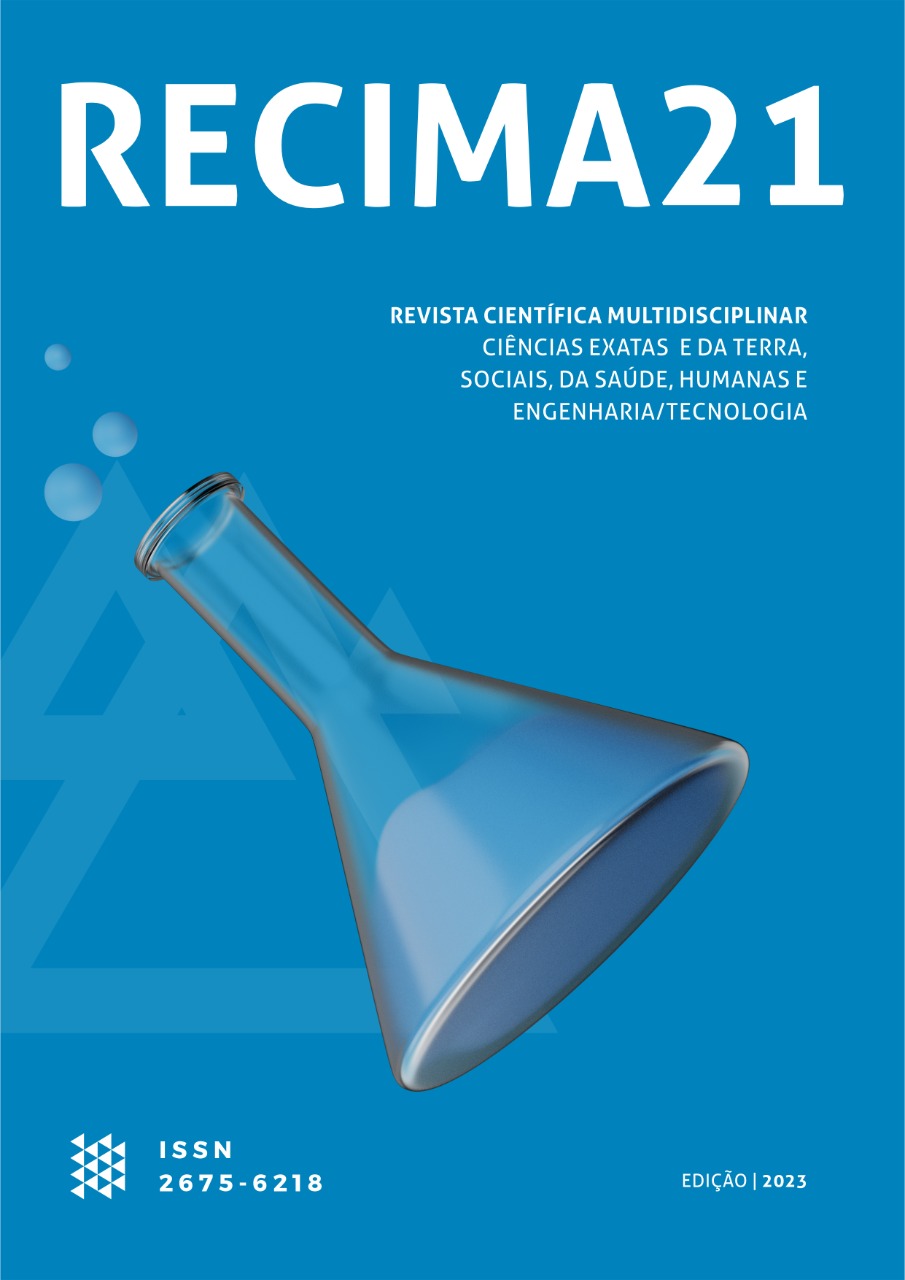PRECISIÓN DEL MANEJO DENTAL EN LA TERAPIA DEL BRUXISMO: REVISIÓN INTEGRATIVA DE LA LITERATURA
DOI:
https://doi.org/10.47820/recima21.v4i6.3347Palabras clave:
bruxismo se define como la parafunciónResumen
El bruxismo se define como la parafunción involuntaria de apretar y/o rechinar los dientes obligatoriamente. Clasificada como una de las condiciones más desafiantes en odontología, afecta, en algún grado o momento de la vida, a más del 90% de la población general. El objetivo del estudio es presentar la eficacia de las principales conductas terapéuticas utilizadas en Odontología, y ayudar en el tratamiento del bruxismo. Para desarrollar el estudio, el proceso de búsqueda se realizó inicialmente en las principales bases de investigación en ciencias de la salud, tales como: PubMed, LILACS y Embase. Los criterios para el filtrado de búsqueda tenían como objetivo incluir artículos publicados en un intervalo de cinco años, entre 2018 y 2023. Además, se seleccionaron estudios con contenido en línea totalmente disponible y publicado en portugués e inglés. Los criterios de inclusión fueron cohortes, transversales, casos y controles, investigación aplicada y estudios piloto. Se excluyeron las revisiones integradoras, sistemáticas y simples de literatura, libros, capítulos de libros, cartas al autor, resúmenes de anales y artículos de opinión. Durante el proceso de selección, se obtuvieron los siguientes resultados a través de búsquedas en las plataformas: PubMed 37 (51,39%), Lilacs 23 (31,94%), EMBASE 12 (16,67%). Es importante que los profesionales sanitarios conozcan las diferentes opciones de tratamiento disponibles y consideren las necesidades individuales del paciente a la hora de elegir el abordaje más adecuado para cada caso de bruxismo.
Descargas
Citas
DINAN, J. E. Oral Appliance Therapy in the Management of Temporomandibular Disorders and Bruxism. Journal of the California Dental Association, v. 51, n. 1, p. 2176975, 2023.
GHOLAMPOUR, S. et al. Finite element analysis of occlusal splint therapy in patients with bruxism. BMC oral health, v. 19, n. 1, p. 1-9, 2019.
KOBAYASHI, F.Y. et al. Immediate evaluation of the effect of infrared LED photobiomodulation on childhood sleep bruxism: a randomized clinical trial. Life, v. 12, n. 7, p. 964 -972, 2022.
KESKINRUZGAR, A. et al. Comparison of kinesio taping and occlusal splint in the management of myofascial pain in patients with sleep bruxism. Journal of back and musculoskeletal rehabilitation, v. 32, n. 1, p. 1-6, 2019.
MELO, G. et al. Bruxism: an umbrella review of systematic reviews. Journal of oral rehabilitation, v. 46, n. 7, p. 666-690, 2019.
MINERVINI, G. et al. Prosthodontic treatment in patients with temporomandibular disorders and orofacial pain and/or bruxism: a review of the literature. Prosthesis, v. 4, n. 2, p. 253-262, 2022.
MIOTTO, C. S. et al. Comparative Effects of Dental Treatment and Two Different Physical Therapy Interventions in Individuals with Bruxism: A Randomized Clinical Trial. J Clin Med Res, v. 3, n. 6, p. 1-15, 2021.
NAKAMURA, H. et al. Effects of a contingent vibratory stimulus delivered by an intra-oral device on sleep bruxism: a pilot study. Sleep and Breathing, v. 23, n.4, p. 363-372, 2019.
PATEL, J.; CARDOSO, J.A.; MEHTA, S. A systematic review of botulinum toxin in the management of patients with temporomandibular disorders and bruxism. British dental journal, v. 226, n. 9, p. 667-672, 2019.
SENDRA, L. A. et al. Clinical outcomes of botulinum toxin type A injections in the management of primary bruxism in adults: A systematic review. The Journal of Prosthetic Dentistry, v. 126, n. 1, p. 33-40, 2021.
SHIM, Y. J. et al. Botulinum toxin therapy for managing sleep bruxism: A randomized and placebo—controlled trial. Toxins, v. 12, n. 3, p. 168, 2020.
VIEIRA, M. A. et al. Effectiveness of Biofeedback in Individuals with Awake Bruxism Compared to Other Types of Treatment: A Systematic Review. International Journal of Environmental Research and Public Health, v. 20, n. 2, p. 1558, 2023.
VOLKAN‐YAZICI, M. et al. Comparison of Kinesio Taping and manual therapy in the treatment of patients with bruxism using shear‐wave elastography—A randomised clinical trial. International Journal of Clinical Practice, v. 75, n. 12, p. e14902, 2021.
WIECKIEWICZ, M. et al. Consecutive controlled case series on effectiveness of opipramol in severe sleep bruxism management—preliminary study on new therapeutic path. Brain Sciences, v. 11, n. 2, p. 146, 2021.
YALCIN, E.D.; ASLAN OZTURK, E.M. Ultrasonographic evaluation of the effect of splint therapy on masseter muscle and blood flow in patients with bruxism. CRANIO®, v.2, n.7, p. 1-9, 2022.
Descargas
Publicado
Cómo citar
Número
Sección
Categorías
Licencia
Derechos de autor 2023 RECIMA21 - Revista Científica Multidisciplinar - ISSN 2675-6218

Esta obra está bajo una licencia internacional Creative Commons Atribución 4.0.
Os direitos autorais dos artigos/resenhas/TCCs publicados pertecem à revista RECIMA21, e seguem o padrão Creative Commons (CC BY 4.0), permitindo a cópia ou reprodução, desde que cite a fonte e respeite os direitos dos autores e contenham menção aos mesmos nos créditos. Toda e qualquer obra publicada na revista, seu conteúdo é de responsabilidade dos autores, cabendo a RECIMA21 apenas ser o veículo de divulgação, seguindo os padrões nacionais e internacionais de publicação.













